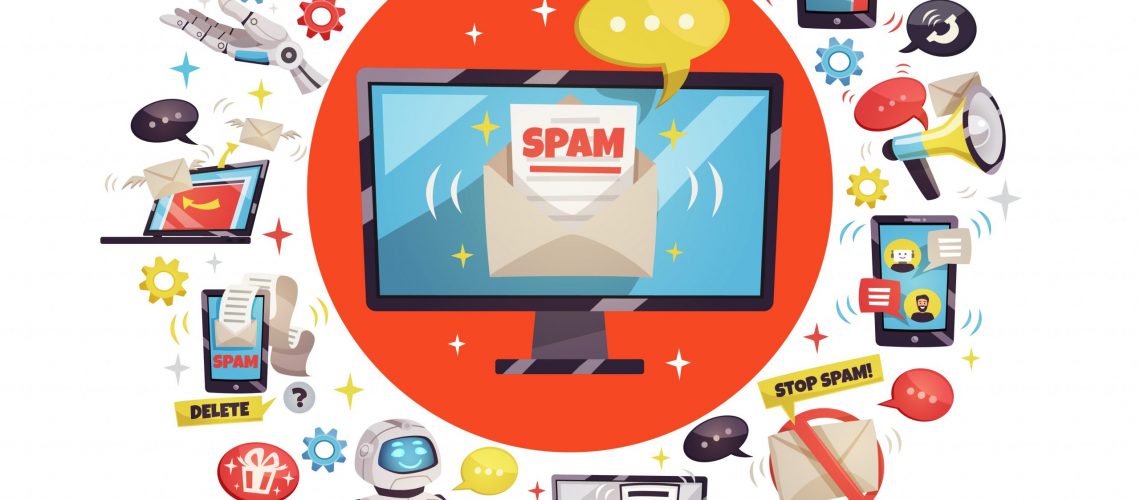About Spam :
Spam may be defined as Unsolicited Bulk and Unsolicited Commercial Messages (i.e. Email/SMS Etc). Spam is “Unsolicited” which means that there is no prior relationship between the parties concerned and the recipient has not personally consented to receive the communication. The spam mails can be annoying and it can include bogus offers and requests that could cost you time and money.
Unlike traditional junk mail in the past, which has a postage cost associated with it, spam is nearly free for perpetrators, it typically costs the same to send 10 postal messages as it does to send 10 million spam emails now.
The absence of Spam in the Indian National legal law and the desire to protect free speech makes legal solutions more difficult to be implemented.
Threats of Spam :
- Malware Mayhem: Some spam emails are like those dodgy alleys in movies. Click on a link or download an attachment, and bam, you could end up installing malware on your device. This nasty stuff can do anything from stealing your personal info to turning your computer into a zombie in a botnet.
- Phishing Fiascos: Spam’s often a front for phishing. These emails pretend to be from legit companies to trick you into giving away sensitive info like passwords or credit card numbers. Imagine handing over your house keys to a stranger pretending to be a locksmith – that’s phishing.
- Scam Central: Spam can be the bait for scams. They might promise big money or an amazing prize if you just pay a small fee or provide your bank details. Spoiler alert: the prize doesn’t exist, and you just got scammed.
- Productivity Pitfall: If you’re drowning in spam, it’s a pain to find the emails you actually need. It’s like trying to find a needle in a haystack, except the haystack is full of junk.
- The Bandwidth Hog: Spam eats up your email server’s bandwidth. Too much of it can slow down your email system, making it as sluggish as a snail racing through peanut butter.
- A Gateway to More Spam: Responding to spam, even just to unsubscribe, can lead to even more spam. It’s like feeding a stray cat – do it once, and they’ll keep coming back for more.
- Emotional Rollercoaster: For some folks, getting a ton of spam can be super stressful. It’s like having someone constantly knocking on your door trying to sell you stuff you don’t need.
How to identify Spam :
- Requesting Personal Information – The sender usually requests your personal information like address, Aadhar Card Number, Pan Card Number, or banking-related information.
- Irregular and Unfamiliar Email Address – The email has a suspicious domain name or uses uncommon characters. Many Fake emails come from people posing as government officials, banking officials, or legitimate companies.
- Messages that require Immediate Attention – The subject of the emails contain words like, “Need Attention”, “Reply”, “Opportunity”, “Immediate” “Expiry Date” and “Urgent” in the subject line.
- Email contains typos – Many fake emails will contain basic typos and errors like misspelling your name, wrong salutation, or have poor grammar usage.
- Spoofed Email Address – An email address looks very similar to the email address of a known sender. For example, the email address may replace the letter “m” with the number “rn.”
- Unsolicited Attachments – Be wary of unsolicited email attachments, as they may contain malware.
- Inconsistencies in Email Design – Look for inconsistencies in email layouts, fonts, or logos compared to previous communications from the same sender.
Marking as Spam :
Gmail, Yahoo Mail, Microsoft Outlook, Apple Mail, and many other Business Email Operations have built-in algorithms that can filter out spam and junk mail by moving them into a spam folder automatically. If you still see there are plenty of spam emails coming to your email here is how you can get rid of them.
- Gmail – You can click Report Spam (Click on the Exclamatory Icon in Circle) or manually move an email into your Spam folder. Gmail also automatically identifies suspicious emails and puts spam warning labels (In Red Colour)
- Apple Mail – You can click Report Spam, Click on the “X” marked trash can (Junk Mail) icon
- Yahoo Mail – You can click Report Spam (Click on the shield icon) or manually move an email into your Spam folder. Yahoo also automatically identifies suspicious emails and puts those emails in the spam folder by default.
- Microsoft Outlook – Click on the checkbox before the email and click on Junk Email Options in the menu (Junk Icon – Circle Cross Button)
Keeping yourself Private :
- Gmail – Go to the Security Check-up option to see the devices, security events, and other email addresses and devices connected to your Gmail account. Adjust the toggle switches to turn features on or off based on your choices. Also please check Personal Information and Privacy Settings.
- Apple Mail – Click the apple icon in the upper left corner of the screen -> Click on System Preferences -> Click on the Security and Privacy option.
- Yahoo Mail – Click on the gear icon -> Click the Account Information option -> In the Account Security section -> click on the Generate app password option.
- Microsoft Outlook – Click on your account icon in the upper right corner of the screen -> In the menu list, click My Account -> Click on the Privacy and Security options to change the settings
Getting rid of spam mail :
- Implement good computer security practices and disconnect (log off) from the internet when you’re away from your computer or not using the computer.
- Be cautious about opening any unsolicited attachments or download files or links from emails you receive. Don’t open an email attachment, even if it looks like it’s from a friend or from a legitimate source unless you are expecting it or you know what it is. Whenever you are seining an attachment, have the habit of including a message about it.
- Download free software only from trusted sources. It can be appealing to download free software i.e. games, file sharing, scanners programs, and other custom free business applications.
- Unsubscribe From Unwanted Email, Chances are, you might miss an important email in the midst of spam. Use the unsubscribe option and the link is generally buried at the bottom of the message having a link leading to customising your subscriptions.
- Use Spam Filters, Most email services have built-in spam filters and you ensure spam filters are enabled and properly configured. Regularly check your spam folder to ensure legitimate emails aren’t being incorrectly filtered.
- Use Disposable or Alternate Email Addresses, for signing up for newsletters, forums, or any other online services.
- Check Privacy Policies, When signing up for services, read their privacy policies to understand how your email will be used.



